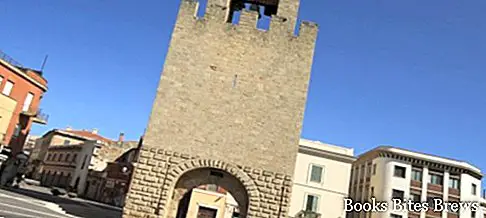What to see in Oristano, itinerary including the main places of interest and monuments in the historic center, including the beach of rice grains, the Cabras pond, the San Cristoforo tower and the Duomo.
Tourist information
City of central-western Sardinia that overlooks the homonymous gulf, Oristano is located in an area characterized by marshes and coasts formed by long sandy beaches and jagged sections with rocky walls overlooking the sea.
The province of Oristano includes many protected areas, including the Monte Arci Regional Natural Park, included between the inhabited centers of Villaurbana, Ales and Marrubiu.
To this must be added the wonderful natural oasis of the Sinis-Isola Mal di Ventre marine natural area and the S'Archittu di Santa Caterina Natural Monument, located in the territory of Cuglieri.
The Oristano coast, extended for over 100 km, includes splendid beaches, among which the beach of Is Arutas is very beautiful, better known as the beach of rice grains, a nickname due to the particular type of sand, formed by grains of quartz having shades of graded colors ranging from green, pink and white.
In the vicinity of Oristano there are a series of ponds, among which the best known is the Cabras pond, a marshy environment very important for its biodiversity.
In the area where the city now stands, inhabited since the pre-Nuragic age, important Phoenician-Punic, Roman and Byzantine archaeological traces have been found.
During the medieval period, Oristano was the capital of the Giudicato of Arborea, subsequently annexed to the Crown of Aragon.
From the beginning of the sixteenth century, its historical events followed those of the whole island, until it became, in the twentieth century, the capital of the homonymous province.
What see
Of the walls built at the time of the Sardinian Giudicati, which were autonomous state entities active in Sardinia between the ninth and fifteenth centuries, only a few remains remain, including the tower of Portixedda and that of Mariano II, known as Torre di San Cristoforo .
In the historic center of Oristano stands the Cathedral of Santa Maria Assunta, built in the thirteenth century on the site where a previous Byzantine church was located.
Recommended readings- Castelsardo (Sardinia): what to see in the medieval village
- Sardinia: Sunday day trips
- Muravera (Sardinia): what to see
- Gulf of Marinella (Sardinia): what to see
- Cala Gonone (Sardinia): what to see
Of the thirteenth-century building, the Gothic chapel of the Madonna del Rimedio remains, as well as some wall structures, while the rest is the result of a reconstruction that took place in the eighteenth century.
The interior, with a single nave and having a Latin cross plan, preserves valuable works, including the fourteenth-century polychrome wooden statue of the Annunciation by Nino Pisano and two fragments of Romanesque ambos dating back to the first half of the twelfth century, depicting Daniel in the pit of the Lions and Two lions that bring down two fawns.
Among the religious buildings we must also mention the Church of Santa Chiara which, dating back to the fourteenth century, is an interesting example of the sober and rigorous Sardinian late Romanesque architecture.
The Church of Carmine, dating back to the second half of the eighteenth century, is considered the most valuable example of Rococo architecture in Sardinia, while the Church of San Francesco, rebuilt in the nineteenth century above the ground where there was a destroyed thirteenth-century building, is in neoclassical style with ionic pronaos.
Inside there is the Crucified Christ, called Nicodemus, a fine example of fifteenth-century wooden sculpture of the Catalan-Sardinian school.




